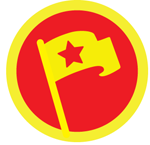Five years after it was founded, Foursquare, the social network based on geolocation, has split its main functions into two apps. An updated version of Foursquare remains, but the new addition, Swarm, brings the social aspect of Foursqaure to a standalone app.
As Facebook’s ramping up to offer more and more standalone apps for all of its various services, most notably Messenger, it looks like the newest trend is to separate apps based on one main function.
Swarm will serve as a way to keep in touch with friends so that you can share your location or let them know where you’re going, while Foursquare will remain an app to help you discover new places to eat, drink, or hang out.
So, why exactly did Foursquare founder Dennis Crowley decide to gamble on a successful product by splitting it into two? What’s the reasoning behind having two separate apps instead of one? I’ll take a closer look at the Foursquare division to get a better idea about the trend, asking why two apps are really better than one.
Foursquare and Swarm
 The new Foursquare, still available on Android and iOS, serves as more of a city guide, a way to discover new places around a city. In a way, taking out the functions that have been transferred to Swarm make it more of a competitor to Yelp, the “online urban guide”.
The new Foursquare, still available on Android and iOS, serves as more of a city guide, a way to discover new places around a city. In a way, taking out the functions that have been transferred to Swarm make it more of a competitor to Yelp, the “online urban guide”.
Foursquare, however, takes into account where you’ve been, what you’ve liked before, and what your friends have liked, providing reviews by friends and contacts; this means more personalized guidance, which can be much more relevant and reliable simply because it’s based on the opinions of people you trust, as opposed to Yelp, which gives reviews from random users.
 Swarm, which launched for iOS and Android late last week, offers some additional privacy compared to similar functions that were removed from Foursquare. By default, Swarm doesn’t give your exact location to others. Rather, it gives your friends a rough idea of where you are, letting you choose whether or not you want to share your exact location.
Swarm, which launched for iOS and Android late last week, offers some additional privacy compared to similar functions that were removed from Foursquare. By default, Swarm doesn’t give your exact location to others. Rather, it gives your friends a rough idea of where you are, letting you choose whether or not you want to share your exact location.
Swarm also functions in a more immediate way, meaning that you can automatically provide your location to friends, without having to check in.
Of course, separating into two apps doesn’t mean that the services don’t work together; in fact, Foursquare and Swarm are meant to co-exist, forming a consistent and fluid mini-ecosystem that makes it easy to switch from one app to the other.
Why separate?
The decision to create two different apps, as explained on the official Foursquare blog and in an exclusive interview with The Verge, was made following observations of user behavior where, 19 times out of 20, users only used the app to either check-in or find new locations.
Only 5% of the Foursquare users opened the app to find a friend and find a restaurant,
says Noah Weiss, Vice President of the company. He adds:
We were thrown into a sort of mission impossible: to have a single function mobile app that actually held two different functions.
Jon Steinback, VP of Product Experience, says:
The use of mobile technology has expanded and evolved. When you open an app, you do it to perform a specific action, not to access something that’s more detailed and complicated.
As a result, separating the two services and improving the individual function of each service was actually bringing them closer to providing apps that served the needs of the user.
Cutting out the clutter
The “simplification” of apps is becoming more of a trend. Increasingly, while apps may be integrated into an ecosystem of products, they’ll have a standalone and specific function.
The same thing’s been happening at Facebook and Google. Facebook’s already made Messenger a standalone app, with plans to discontinue the service in the Facebook mobile app completely, while Google Drive for Android recently lost the function to edit documents, which was transferred into two new apps: Docs for text documents, and Sheets for spreadsheets.
 It’s almost as if users have less time to spend using an app, and if whatever they need to use it for takes longer than a few seconds, the app ends up in user oblivion. As a result, the “Swiss army knife” of apps, with many different integrated functions, has suddenly become obsolete, slow, and undesirable because they take time, something that users no longer have.
It’s almost as if users have less time to spend using an app, and if whatever they need to use it for takes longer than a few seconds, the app ends up in user oblivion. As a result, the “Swiss army knife” of apps, with many different integrated functions, has suddenly become obsolete, slow, and undesirable because they take time, something that users no longer have.
We can also take a look at the modular trend, which can be considered a response to the increasingly urgent demands for personalization.
Users create a network of apps on their smartphones based on their specific needs, made up of individual apps that perform useful functions and make their mobile digital world more streamlined and easier to use.
 With our own app ecosystems, there’s no need for the excessive: if I need an app to edit text documents, but I don’t need one for spreadsheets, why would I choose a product that offers both? It’s cutting out the clutter and only getting what you need.
With our own app ecosystems, there’s no need for the excessive: if I need an app to edit text documents, but I don’t need one for spreadsheets, why would I choose a product that offers both? It’s cutting out the clutter and only getting what you need.
So, Foursquare adapts…
In short, the trend has changed. While all-in-one products used to be the most popular in the market, the new trend is towards fragmentation, which generates a greater, more conscious choice.
Space and time are becoming less and less available, and we’re less and less willing to sacrifice them for something we don’t really need. Technology, it seems, is adapting accordingly, and the Foursquare/Swarm division is the perfect example of this shift.
When apps like Foursquare, Facebook, and Google start separating their services, it’s probably a sign that this “trend” is quickly becoming the norm. Pretty soon, we’ll find out if users really do relish these separations.
Do you prefer standalone apps to all-in-one apps?
Follow Pico on Twitter @pfpic


